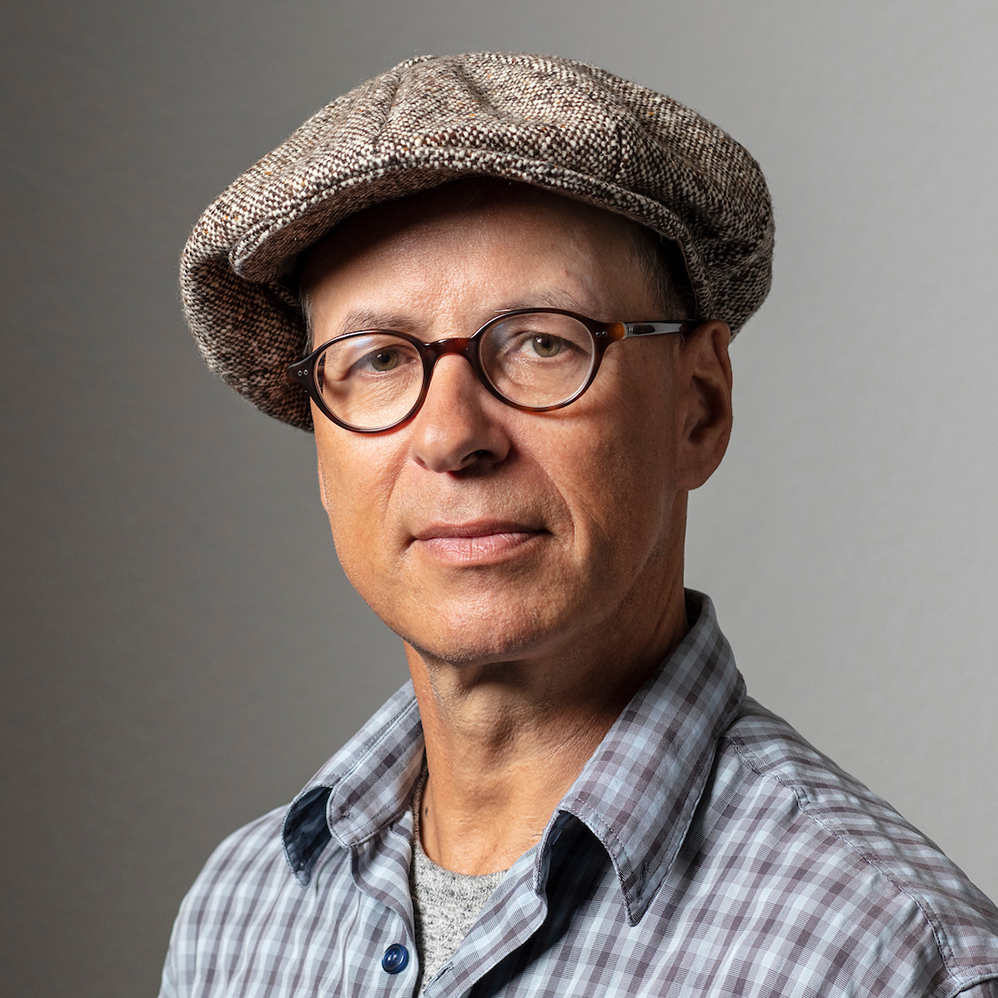
How popular votes made Switzerland a global democracy leader
With its second federal constitution of 1874, Switzerland was suddenly catapulted to the forefront of democracy development worldwide. No canton had voted so strongly in favour of radical change as Schaffhausen.
Adopting the new federal constitution marked a milestone in Swiss history. It brought about several important improvements, making up for just about everything the original constitution lacked.
Many of these improvements would not have happened without what became known as the Democratic Movement. This movement had arisen in several parts of Switzerland in response to controversial decisions taken by cantonal parliaments, such as Basel Country and Basel City moving towards reunification and building railroads through farm land in Bern.
This series in several parts is tailored for our author: Claude Longchamp’s expertise makes him the man who can bring alive the places where important things happened.
Longchamp was a founder of the research institute gfs.bern and is the most experienced political analyst in Switzerland. He is also a historian. Combining these disciplines, Longchamp has for many years given highly acclaimed historic tours of Bern and other sites.
“Longchamp performs democracy,” was one journalist’s headline on a report about a city tour.
This multimedia series, which the author is producing exclusively for SWI swissinfo.ch, doesn’t concentrate on cities – instead its focus is on important places.
He also posts regular contributions on FacebookExternal link, Instagram External linkand TwitterExternal link.
Effects of industrialisation
Taking agricultural land to make way for a steam train was typical of the decisions of that era. Industrialisation, which was changing Switzerland at a feverish pace, did not suit everyone. Many felt that progress was riding roughshod over them.
In the 1860s a broad-based coalition emerged to oppose the Liberals, who made up the country’s biggest political party, formed the government, and were seen as the political arm of the economic revolution. Liberalism in Switzerland increasingly represented the interests of capitalism and the wealthy elite.
This provoked a reaction among the lower and middle classes – people who held jobs as teachers and clerks. They began to campaign for state reforms in local newspapers sympathetic to their cause.
Zurich historian Rolf Graber writes that people demanded rights because they wanted to see a more tolerable form of modernisation in the age of industrialisation.
One idea that united this loosely-knit movement was their faith in the principle of “one man, one vote”. These activists argued that the adult male citizens of the country were perfectly capable of evaluating political decisions and the advantages and disadvantages they offered. If a parliamentary decision was not in the interests of the general public, then the people should be able to veto it, without the need to call for new general elections.
Origins of popular sovereignty
So it was that, 25 years after the founding of the federal republic, a new federal constitution was written to include inalienable rights such as the right to a referendum on legislation. This way, the minority in parliament could demand that voters make the final, binding decision on an issue.
This right of veto was nothing less than the introduction of popular sovereignty.
The 1874 constitution also strengthened the young federal state. A federal court was established to ensure the cantons implemented laws in a consistent manner. Jews were granted full freedom of religion, something they had previously been denied. Male voters who moved to another canton could get their full political rights in their new place of residence after a waiting period. There were firmer guarantees for some basic rights, like the right to marry. And the death penalty was abolished – at least for a time.
Split among the cantons
The highest rate of approval for the new constitution – at an astonishing 97% – came from voters in Schaffhausen, a small canton in the north-east of the country with a rather homogeneous population, just like Jean-Jacques Rousseau had imagined a century before as the basis for popular sovereignty.
But voters in other small cantons felt differently: 92% of men in Uri and 86% of men in Appenzell Inner Rhodes rejected the new text.
The two extremes were a matter of religion as much as anything else. The “yes” side was at its strongest in small Protestant cantons, while the “no” camp prevailed in Catholic cantons.
It took two attempts to get the carefully amended constitution through. Two years earlier, voters had already turned down a draft revision. The popular vote was pretty evenly divided, but it was the requirement for a majority of cantons that sank the effort.

More
What’s a referendum?
Broad-based opposition had ensured this result. As well as the Catholic-Conservative bloc, the French-speaking parts of the country came out against the new constitution in 1872.
Move to democracy with people’s rights
The 1874 vote result in Schaffhausen showed the extent to which the Democratic Movement had affected political thinking in the Protestant cantons. Unlike in neighbouring Winterthur in canton Zurich, there was no strong opposition to capitalism there. But the ideas put forward by the movement had spread throughout Eastern Switzerland and voters had chosen accordingly.
A veritable cascade of constitutional amendments in various cantons also helped. A case in point is the 1869 revision in canton Zurich to provide a legal basis for the rule of the people. By championing this effort, the Democratic Party in Winterthur emerged as a counterweight to the Liberal Party in Zurich. The citizens’ openness to reform had also been stimulated by a cholera epidemic the previous winter.
From ‘majority rules’ to democracy by bargaining
The consequences of the 1874 constitution for federal politics were considerable. Up until then, the Liberals had won every election to both houses of parliament. The country’s purely representative form of democracy had favoured these outcomes, which in turn had led to a culture of unwillingness to compromise adopted from the English-speaking world.
Today there are two models of democracy:
The ideal of competitive democracy, usually with two parties that take turns forming the government and the opposition. Switzerland was like that in 1848, not least because elections to the two houses of parliament were on a “first-past-the-post” or simple majority basis.
The ideal of consensus democracy prevails mainly in culturally divided societies. It is based on proportional representation, a multi-party system, and a power-sharing executive. Switzerland has operated in this way since 1959.
Switzerland has historically evolved from the first model to the second, mostly as a result of the evolution of people’s rights.
The referendum mechanism introduced by the new constitution changed this: the first eight national votes held after 1874 went in favour of the opposition.
This led to a rethinking in parliament, and finally to a new parliamentary culture. Government and opposition got into the habit of negotiating. The main aim was to avoid a referendum or – if there was one – for one’s own side to be less open to attack.
The 1874 constitution was thus the first step towards consensus democracy in Switzerland. A culture of bargaining involving officials in ministries and agencies was the start, and governments gradually followed suit. In 1891 a Catholic conservative was elected to the seven-member Federal Council (executive) for the first time. Around the same time, an initiative calling for a partial revision of the constitution was accepted.
Democratic institutions for democratic citizens
Swiss democracy historians from Andreas Gross to Jo Lang agree on the significance of the 1874 constitutional reform. It not only gave the federal state some stability but, through the people’s rights, it also provided balance between democratic institutions and the democratic aspirations of citizens.
For almost two decades following the rewriting of the constitution, Switzerland was at the forefront of the global evolution of democracy. Then in 1893, New Zealand introduced an election law that included the popular vote and full suffrage for adult women as well as men. Switzerland was left behind as a result of male-only suffrage, which had yet to be contested.
By the turn of the century, Switzerland had to give up its leading role in developing democracy. A major preoccupation at the time was to gradually expand the rights of the people to act as a check on the country’s parliament and the government.
Globally, however, things were moving in a different direction. With the end of the First World War, parliamentary democracies with no room for popular referendums became the predominant trend.
Translated from German by Terence MacNamee/gw































You can find an overview of ongoing debates with our journalists here . Please join us!
If you want to start a conversation about a topic raised in this article or want to report factual errors, email us at english@swissinfo.ch.